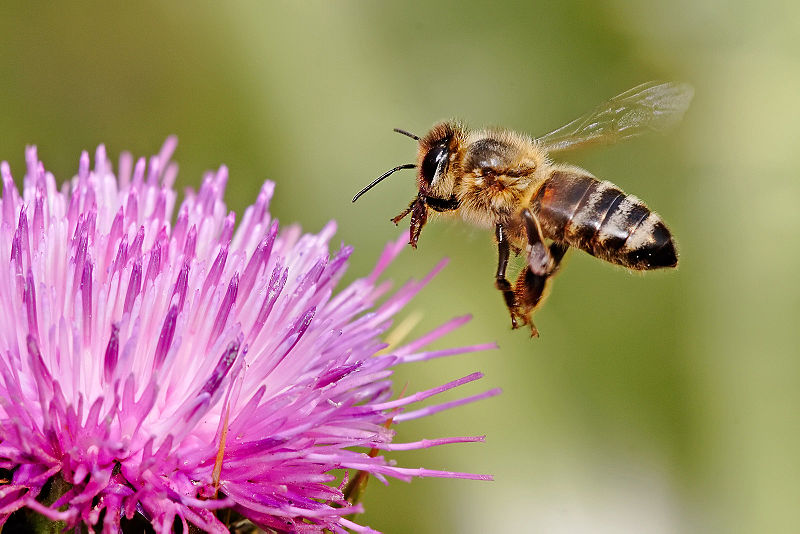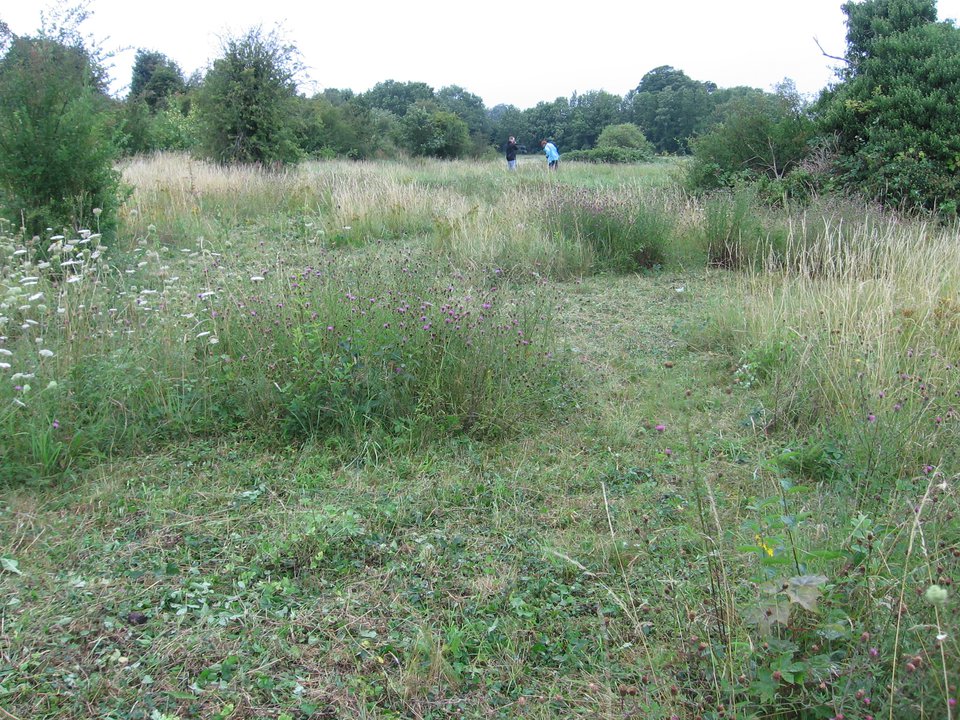Many of you will probably be aware that bees have featured heavily in the news recently. Perhaps the most startling news is that recent research has revealed that almost a third of honeybee colonies in the UK died in the winter of 2012-2013. This is the worst honeybee death rate in the whole of Europe, and undoubtedly bad news for our UK honeybees.
The honey bee (Apis mellifera) is native to Europe, Asia and Africa but has subsequently been introduced throughout the world. Honey bees are ‘social bees’ which means they live in large colonies of up to 50,000 bees in a hive, where they have a single queen bee who lays all the eggs for the group. The colony also consists of worker bees and drone bees, the workers are infertile females that leave the hive to collect pollen and nectar, whereas the drones’ primary role is to be the reproductive male.
Honey bees typically live in dead, hollow trees or man-made hives, and they need to live near a good source of pollen and nectar. As their name suggests, they are industrious producers of our beloved honey!
Honey is produced from the nectar that bees collect and sealed in the wax honeycombs within the hive. It is easy to forget, however, that honey bees are not only important for their honey, but they also pollinate hundreds of plant species including many food crops. In fact, it is estimated that one third of the human food supply relies on insect pollinators, most of which are bees. This means that in commercial terms, bees are extremely valuable to us! In the UK, for instance, £400 million worth of fruit and vegetables is pollinated by insects every year. If you think about it, bees are carrying out a pretty phenomenal amount of pollination!
Unfortunately honey bees are currently under threat from parasites, disease and loss of habitat and foraging land. One of the more recent threat to British honey bees has been the parasitic mite (Varroa jacobsoni), which infests colonies and causes them to collapse and die within three years. This mite has devastated honey bee populations around the world and, furthermore, is very difficult to control. Pesticides have also recently been shown to be extremely harmful to bees and, as a result, the European Union has banned the use of several particularly harmful pesticides in agriculture.
The loss of habitats such as hedgerows and wildflower meadows to intensive agriculture is also responsible for reducing honey bee populations. Removing these valuable foraging sources can reduce the range of pollen and nectar types available and ultimately narrow the window of opportunity for foraging.
So what would happen if honeybees continued to drastically decline? Well, it is estimated that it would cost least £1.8 billion a year to replace bee services with hand pollination. Which puts things into perspective, when you realise the relative ease in which bees go about collecting pollen! To find out more about how the conservation of bees is being addressed check out the following websites for some useful info:
http://www.buglife.org.uk/campaigns-and-our-work/habitat-projects/get-britain-buzzing
http://www.foe.co.uk/what_we_do/bee_cause_about_35042
SNCV Biodiversity Assistant
Eleanor Kirby-Green








